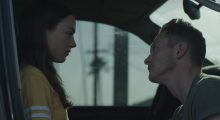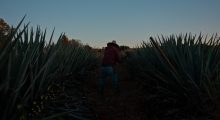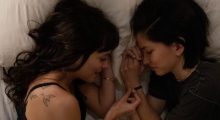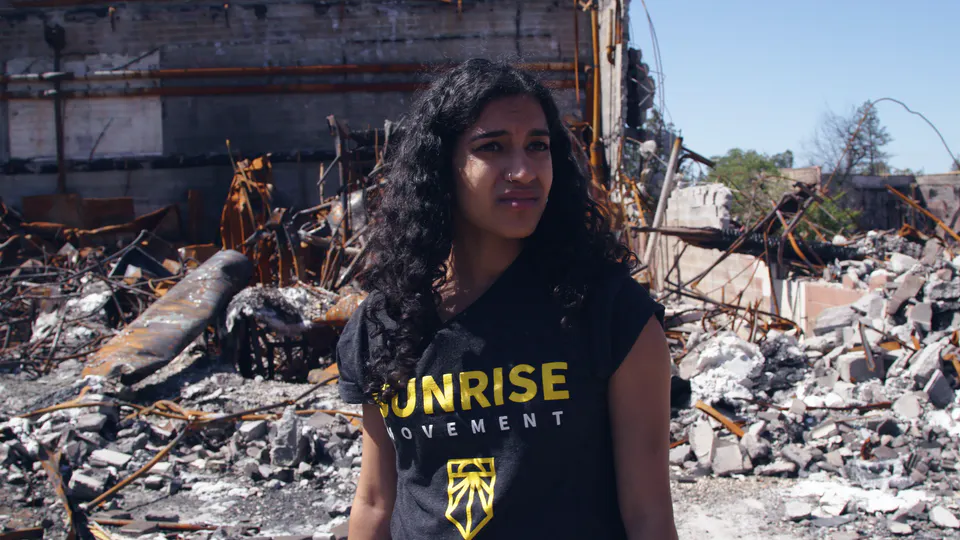6582 Results for “production”
-
“Family Photos Gave Me a Deeper Connection to the People Who Lived in the Suburbs”: DP Chananun Chotrungroj on Palm Trees and Power Lines

Palm Trees and Power Lines tells the story of a wild child who, after a series of unmemorable hookups and a reluctant dine-and-dash, finds herself enthralled by a man in his thirties. The feature debut by Jamie Dack evokes the fragility of even the most precocious youth. Cinematographer Chananun Chotrungroj explains how she used framing to channel the protagonist’s state and why she looked to family photos on social media to better understand the film’s story. Filmmaker: How and why did you wind up being the cinematographer of your film? What were the factors and attributes that led to your being […]
by Filmmaker Staff on Jan 24, 2022 -
“This Film Had to Be Made by the Constant Act of Sharing” | Juan Pablo González, Dos Estaciones

The last two years have prompted much contemplation and reconsideration of the reasons why we make our films as well as the ways in which we make them. What aspect of your filmmaking—whether in your creative process, the way you finance your films, your production methodology or the way you relate to your audience—did you have to reinvent in order to make and complete the film you are bringing to the festival this year? Six months before we filmed Dos Estaciones, my daughter Ema was born. She was born at the peak of the pandemic when there was no testing or […]
by Filmmaker Staff on Jan 24, 2022 -
“In Each Location I Knew How and When the Sun Would Hit”: Gerardo Guerra on Dos Estaciones

Red dirt, blue sky and green agave mark the landscape of Jalisco’s highlands, and they also form the basis of Juan Pablo González’s Dos Estaciones, which follows the heir to a struggling tequila factory as she attempts to reinvigorate the business in the face of plagues and floods. The film was shot by Gerardo Guerra, who discusses executing complicated setups with limited personnel, learning the finest details of the shooting locations and walking the line between documentary and fiction. Filmmaker: How and why did you wind up being the cinematographer of your film? What were the factors and attributes that led […]
by Filmmaker Staff on Jan 24, 2022 -
“Who Does Visibility Serve and Who Does it Harm?”: Chase Joynt and Morgan M. Page on Their Sundance Doc Framing Agnes

Framing Agnes, the title of Chase Joynt’s (No Ordinary Man) latest genre-queering film – world premiering in the Next section at this year’s Sundance – refers to a controversial trans woman who, in the 1960s, participated in a groundbreaking gender health research study at UCLA. It also refers to the fact that, historically, trans people have never been allowed to leave the frame. Or, paradoxically, enter the frame (if not a blond beauty like Agnes or Christine Jorgensen). So how does Joynt place Agnes in his cinematic frame without framing her? The answer is with an abundance of artistic ingenuity […]
by Lauren Wissot on Jan 24, 2022 -
“The Front Lines of Filming During COVID” | Tig Notaro & Stephanie Allynne, Am I Ok?

The last two years have prompted much contemplation and reconsideration of the reasons why we make our films as well as the ways in which we make them. What aspect of your filmmaking—whether in your creative process, the way you finance your films, your production methodology or the way you relate to your audience—did you have to reinvent in order to make and complete the film you are bringing to the festival this year? It’s been a wild ride in terms of making our first feature film during times of massive change and upheaval. We were on the front lines […]
by Filmmaker Staff on Jan 24, 2022 -
“We Wanted to Avoid the Cold and Automated Artifice of Fiction Filmmaking”: DP Jarmo Kiuru on Girl Picture

Alli Haapasalo’s Girl Picture follows two teen girls who work together after school at a food court smoothie kiosk. As the best friends swap stories about love, sex and life, the film emerges as both a coming-of-age story and a depiction of unrestricted feminine vitality. Director of photography Jarmo Kiuru describes how she concocted the film’s look and the difficulties of shooting with a reduced budget and amid Finland’s second wave of COVID infections. Filmmaker: How and why did you wind up being the cinematographer of your film? What were the factors and attributes that led to your being hired for this job? […]
by Filmmaker Staff on Jan 24, 2022 -
“No Idea Was Out of the Realm of Possibility”: Editor Michael Felker on Something in the Dirt

Something in the Dirt is the fifth feature by Justin Benson and Aaron Moorhead, indie multi-hyphenates who directed, wrote, shot, co-edited, and produced the story about a pair of fast friends who attempt to turn an encounter with the supernatural into fast money. Co-editor Michael Felker discusses how the film’s form enabled him to take risks and creatively approach the editing process. Filmmaker: How and why did you wind up being the editor of your film? What were the factors and attributes that led to your being hired for this job? Felker: I’ve been the editor for Benson and Moorhead’s […]
by Filmmaker Staff on Jan 23, 2022 -
“Being Overwhelmed Doesn’t Have to Lead to Cynicism”: Rachel Lears on Her Climate Change Sundance Doc, To The End

Cynicism is the dramatic foil in To the End, Rachel Lears’s Sundance Documentary Competition follow-up to her 2020 Sundance picture Knock Down the House. In that film she followed four women — political newcomers hailing from diverse walks of life, all motivated to action by the Trump presidency — as they mounted underdog campaigns to win House seats. That one of the women was New York candidate Alexandria Ocasio-Cortez gave the film a rousingly satisfying ending, even as other women’s losses made clear the forces opposing progressive generational change. Employing a similar structure, To the End follows three young activists […]
by Scott Macaulay on Jan 23, 2022 -
“The Shelter Radiated Human Warmth and Closeness”: DP Simon Lereng Wilmont on A House Made of Splinters

The war in eastern Ukraine has left countless children as orphans, and in the face of systemic failure, the burden to care for them falls mostly on caretakers at overburdened orphanages. Simon Lereng Wilmont made one such orphanage the subject of his latest film, A House Made of Splinters. Wilmont both directed and shot the film, and below he discusses the paradoxes of shooting in an isolated orphanage during COVID and recounts the most difficult scene he has ever filmed. Filmmaker: How and why did you wind up being the cinematographer of your film? What were the factors and attributes that […]
by Filmmaker Staff on Jan 23, 2022 -
“Just Being Able to Meet Your Subjects Is a Luxury” | Simon Lereng Wilmont, A House Made of Splinters


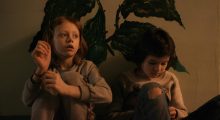
The last two years have prompted much contemplation and reconsideration of the reasons why we make our films as well as the ways in which we make them. What aspect of your filmmaking—whether in your creative process, the way you finance your films, your production methodology or the way you relate to your audience—did you have to reinvent in order to make and complete the film you are bringing to the festival this year? I miss the hustle and bustle of human interaction—both in the financing and the creative part of the filmmaking process. E-meetings are great in that it […]
by Filmmaker Staff on Jan 23, 2022
